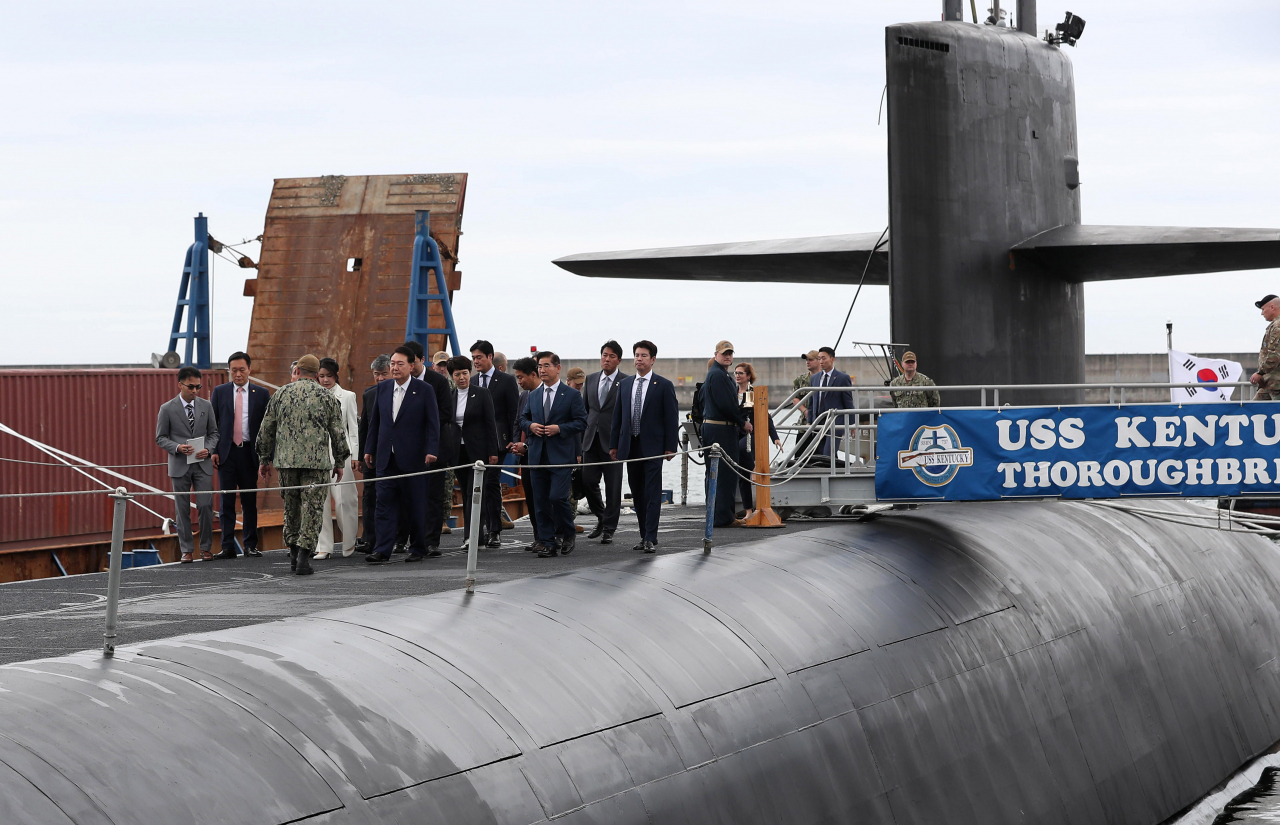 |
President Yoon Suk Yeol and first lady Kim Keon Hee board the US Navy's Ohio-class ballistic-missile submarine, the USS Kentucky, a day after the ship arrived at a Korean naval base near Busan, marking the first visit of a US nuclear-capable submarine in more than four decades, Tuesday. (Joint Press Corps) |
South Korean President Yoon Suk Yeol on Wednesday boarded the USS Kentucky, an Ohio-class ballistic missile submarine, in a show of solidarity and force with its biggest ally in deterring North Korea's evolving nuclear missile threats.
The visit by President Yoon and first lady Kim Keon Hee came hours after North Korea fired two short-range missiles in an apparent protest against the arrival of the US nuclear-capable submarine in South Korea and the inaugural meeting of the new Nuclear Consultative Group between the allies the previous day.
“The deployment of the USS Kentucky underscores the resolve of South Korea and the United States to routinely position US strategic assets and strengthen extended deterrence capabilities,” he said, adding that he is the first leader of US' allied nations to visit the nuclear-armed submarine.
Noting the inaugural meeting of Korea-US NCG held a day earlier, Yoon said the two nations had discussed joint planning and execution of a nuclear operation combining nuclear and non-nuclear assets, and agreed to enhance the visibility of the deployment of US strategic assets around the Korean Peninsula.
“This move sends a clear message that North Korea cannot contemplate nuclear provocation,” he said. “We have sternly warned that any such acts from North Korea could result in the termination of their regime.”
Yoon promised that the US and South Korea would consistently and resolutely counter North Korea's growing nuclear missile threats. This will be done through the regular deployment of strategic assets like the Nuclear Consultation Group and ballistic missile submarines.
Yoon toured the command and control room, missile control room and missile storage of the USS Kentucky along with participants of the US-Korea Nuclear Consultative Group and key military officers from the US and Korea. The president received a report on the capabilities of the nuclear submarine from the captain of the USS Kentucky.
Yoon expressed confidence in the US-Korea joint response capabilities to the North Korean nuclear threat, saying, "It's reassuring to see America's most important nuclear strategic assets firsthand,” according to a written statement released by Yoon’s spokesperson after the tour.
The arrival of the USS Kentucky was confirmed by Kurt Campbell, coordinator for the Indo-Pacific at the US National Security Council, at a press conference held after the NCG meeting on Tuesday.
Campbell underscored the US' commitment to maintaining peace and stability for the Korean Peninsula and ensuring strong, steady and dependable nuclear deterrence through such actions.
The last time a nuclear missile-capable submarine was deployed on the Korean Peninsula was 42 years ago, when the Robert Leeham (SSBN 601) arrived in Changwon City, South Gyeongsang Province, in March 1981.
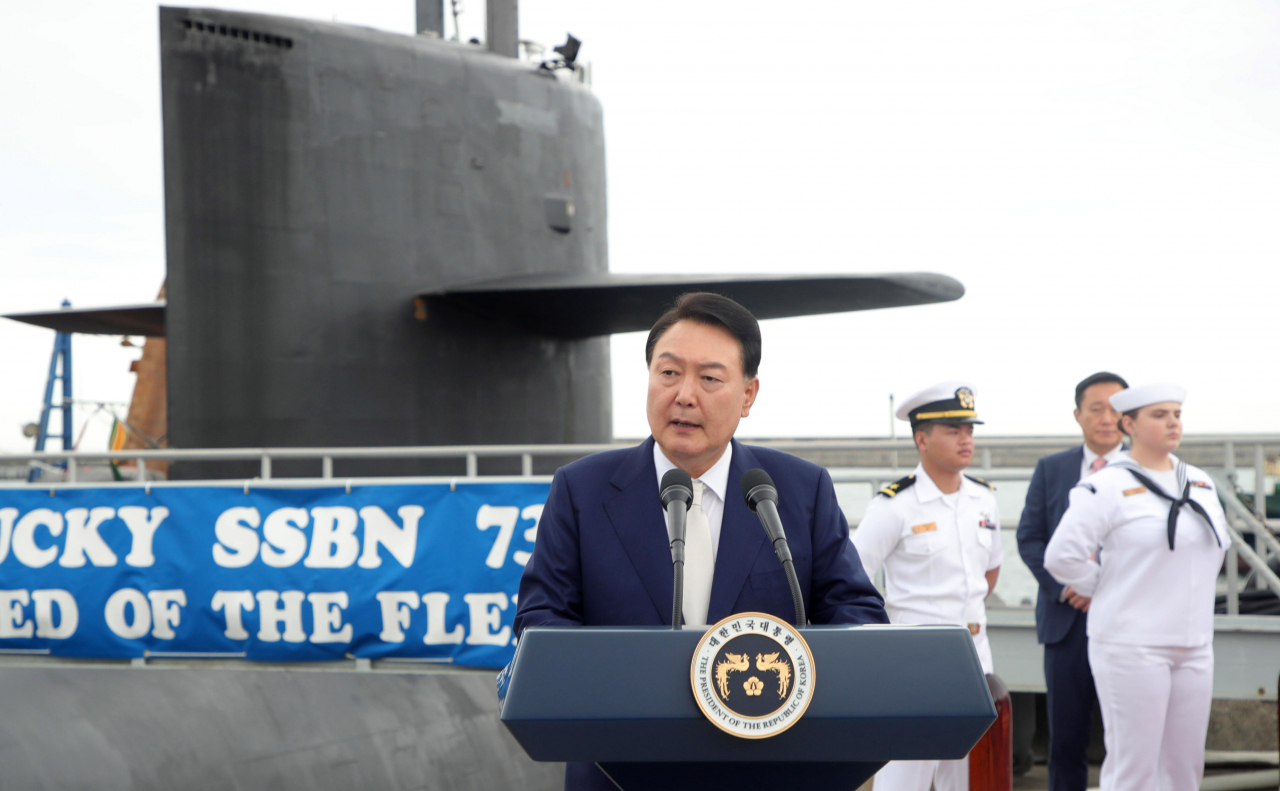 |
President Yoon Suk Yeol board the US Navy's Ohio-class ballistic-missile submarine, the USS Kentucky, a day after the ship arrived at a Korean naval base near Busan, marking the first visit of a US nuclear-capable submarine in more than four decades, Tuesday. (Joint Press Corps) |
The Kentucky, commissioned in 1991, carries 20 Trident II D5 missiles capable of delivering up to eight nuclear warheads 12,000 kilometers away. It is one of 14 US submarines with ballistic missile capabilities.
During a summit in Washington in April, Yoon and US President Joe Biden proposed the deployment of US strategic assets, including ballistic missile submarines, to the Korean Peninsula to strengthen deterrence against North Korea. This deployment comes just 2 1/2 months after the summit, marking the fulfillment of a significant agreement between the two nations.
Amid strengthening military ties between the two allies, North Korea launched two ballistic missiles eastward early Wednesday, according to the militaries of Japan and South Korea. This happened just hours after the US ballistic missile submarine docked in a South Korean port for the first time in 40 years.
Hours before Yoon's visit to the ship, North Korea fired two short-range ballistic missiles from the Sunan district of Pyongyang, according to South Korea's Joint Chiefs of Staff.
Launched between 3:30 a.m. and 3:46 a.m., the missiles traveled approximately 550 kilometers before splashing down in the East Sea, the South Korean military said, without providing further details.
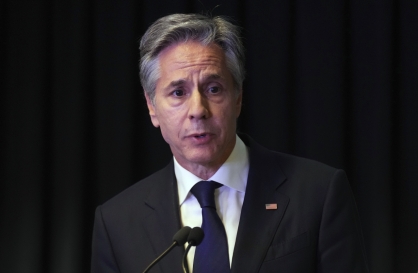
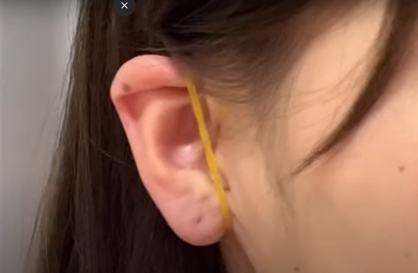
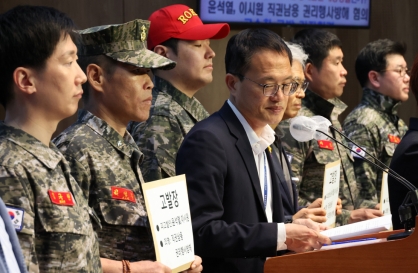


![[Weekender] How DDP emerged as an icon of Seoul](http://res.heraldm.com/phpwas/restmb_idxmake.php?idx=644&simg=/content/image/2024/04/25/20240425050915_0.jpg)
![[KH Explains] No more 'Michael' at Kakao Games](http://res.heraldm.com/phpwas/restmb_idxmake.php?idx=644&simg=/content/image/2024/04/28/20240428050183_0.jpg)
